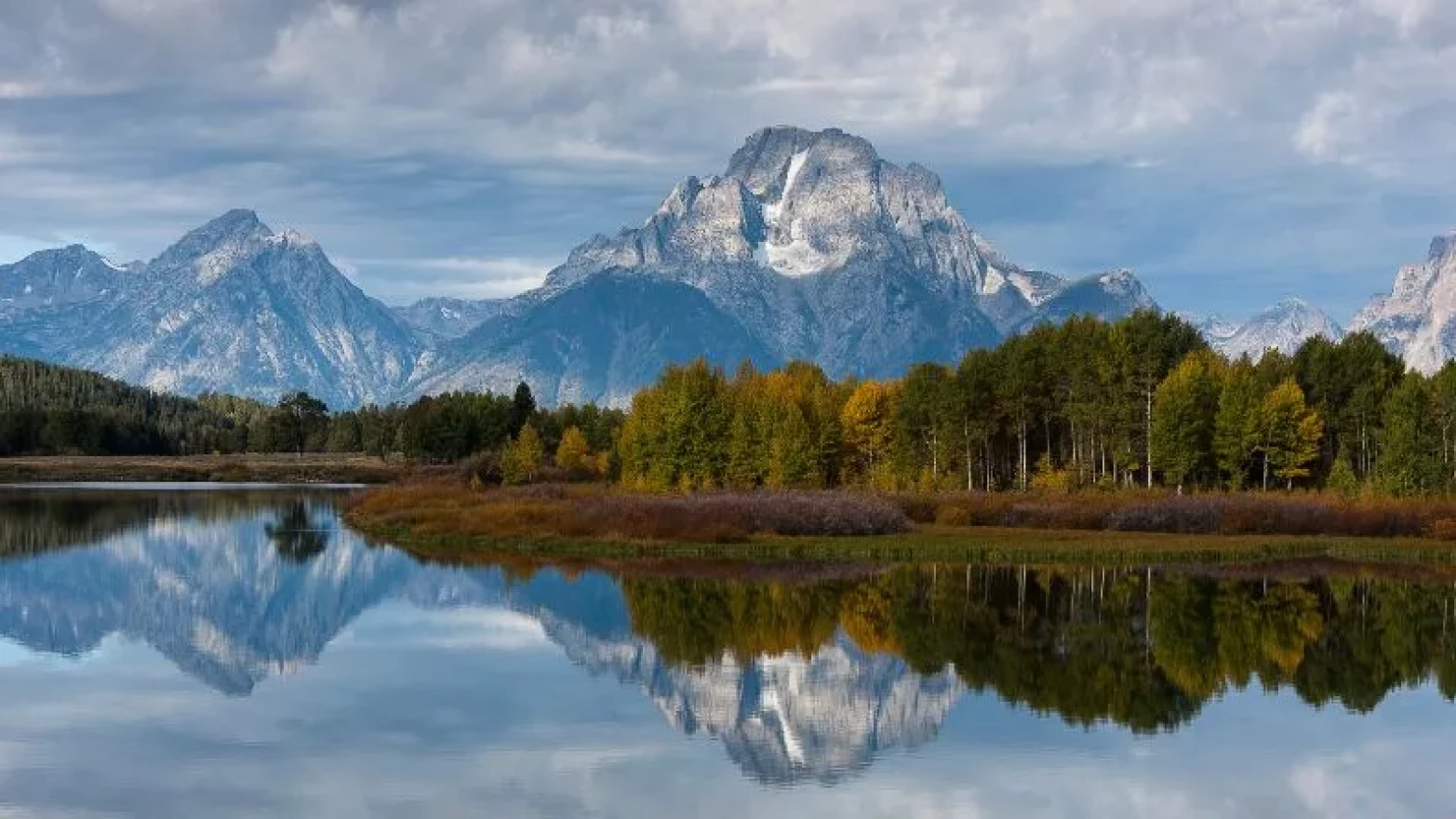An iconic stretch of the Upper Snake River that flows through Grand Teton National Park is at risk of drying up despite this year’s heavy snowpack.
Federal officials cut more than 80% of flows from Jackson Lake Dam starting today in an effort to keep water from being wasted downstream. The state of Wyoming did intervene last week, announcing it will make up for those flows with water from its emergency bank, but it could exhaust those resources in a couple weeks.
Now, Teton County officials are calling on the Department of Interior to step in.
In a Tuesday letter to Secretary of the Interior Deb Haaland, local commissioners wrote that the Bureau of Reclamation decision to cut flows “was made unilaterally with little consultation or input from local, state, and other federal government agencies.”
Advertisement
Commissioners, who were just informed of the issue late last week, called on Haaland to reconsider the reduction of flows until a long-term solution is reached.
“Right now, we’re in a no compromise situation where Wyoming’s going to use up the bulk of the water that we own to maintain critical flows,” Commissioner Mark Newcomb told KHOL. “And what we don’t know is how we ended up in this situation.”
What would happen to the river without further action?
According to Alan Osterland, “We really don’t want to find out.”
Osterland is the chief of fisheries at the Wyoming Game & Fish Department. He said Oxbow Bend, a popular overlook he describes as a “national treasure,” would be most impacted by the cuts. It’s right in the middle of the 4.5 miles of impacted water between the dam and Pacific Creek.
Newcomb said the destination is “incredibly valuable” to the county.
“Losing it for even a couple months could have huge impacts on the environment, on wildlife and on our scenic and recreational values,” he said.
A reduction in flows would also mean a loss of habitat for fish such as cutthroat trout and bluehead suckers – designated a species of greatest conservation need in the state.
Why cut flows?
The Bureau of Reclamation announced late last week that it will reduce flows out of the dam from 280 cubic feet per second to 50. Those will hold for the next six to eight weeks.
Even though the decision came after weeks of talks with stakeholders, it came as a shock to state and local officials. Osterland said flows haven’t been that low in this stretch of river since at least the 1990s.
“It took us off guard that they’re be a shutoff of flows coming from Jackson Lake,” he said. “That is nothing that anybody saw coming.”
Due to an above-average snowpack, reservoirs downstream are filling up, and allowing the river to flow at high volume could result in what many see as wasting water. With no place to store the water in the Upper Snake system, it would flow into the Columbia River and eventually the Pacific Ocean.
Agricultural interests own the rights to much of that water, according to Orion Hatch, who runs local nonprofit Snake River Fund.
“Unfortunately, we’re coming to the realization that agricultural interests really supersede all of these protections that are in place for the watershed,” Hatch said.
Representatives with the federal bureau declined to comment about any additional motivations behind the decision to cut flows.
An ultimatum
According to Hatch, federal officials gave the state “an ultimatum”: let the downstream ecosystems suffer or make up for the reduced flows by pulling from its banked water rights.
The state chose the latter, withdrawing its 19,000 acre feet of saved up water.
But, while Hatch said the state has staved off the emergency now, “it’s not the end of the story.”
The state is slated to use up all the water in its bank by mid-June, leaving about 10 days of potentially historic drawdown. And with Wyoming’s water resources spent, officials may not be able to make up for inadequate flows in the coming seasons.
“It’s absolutely shocking that this is even on the table,” Hatch said, “considering the importance of this stretch of river for the native fisheries that we have here, the recreationalists who use it and the outfitters who make their living plying the waters of the Upper Snake.”
What’s next
Federal and state officials are meeting weekly to find solutions to keep the section of the Upper Snake from going dry. This could mean renting more water to fill that 10-day gap.
“In an ideal situation, more water would be found somewhere,” said Newcomb, the Teton County commissioner.
The county officials, who are awaiting a response from the Department of Interior, are also asking for an investigation into how decisions on water management are made in the area and for more collaboration among local, state and federal partners.
Taylor Phillips, who owns Jackson Hole EcoTour Adventures, is also circulating a petition to send a letter to Secretary Haaland to stop the reduction of flows. At the time of reporting, it had over 500 signatures.
Osterland, with Game & Fish, said that — with all these efforts — he’s hopeful they’ll be able to avoid that worst-case scenario of Oxbow Bend going dry.
“Water in the west is complex,” he said. “There’s always going to be wrinkles in it, but I’m confident we can come up with some good solutions.”
Representatives from the regional Bureau of Reclamation office are slated to come to the Teton County Library for an annual meeting on May 18 at 3 p.m. They’ll discuss plans for managing water coming out of Jackson Lake Dam with the public.








